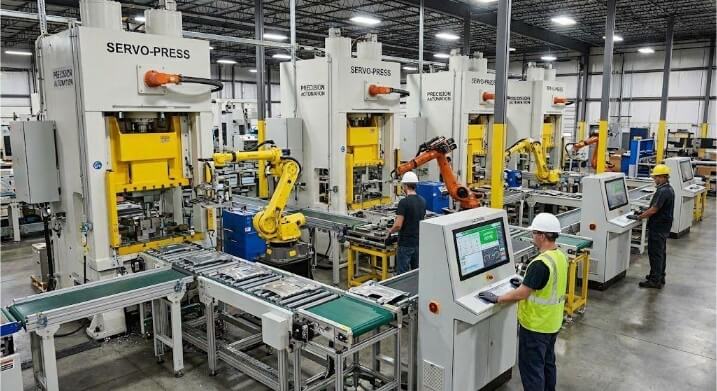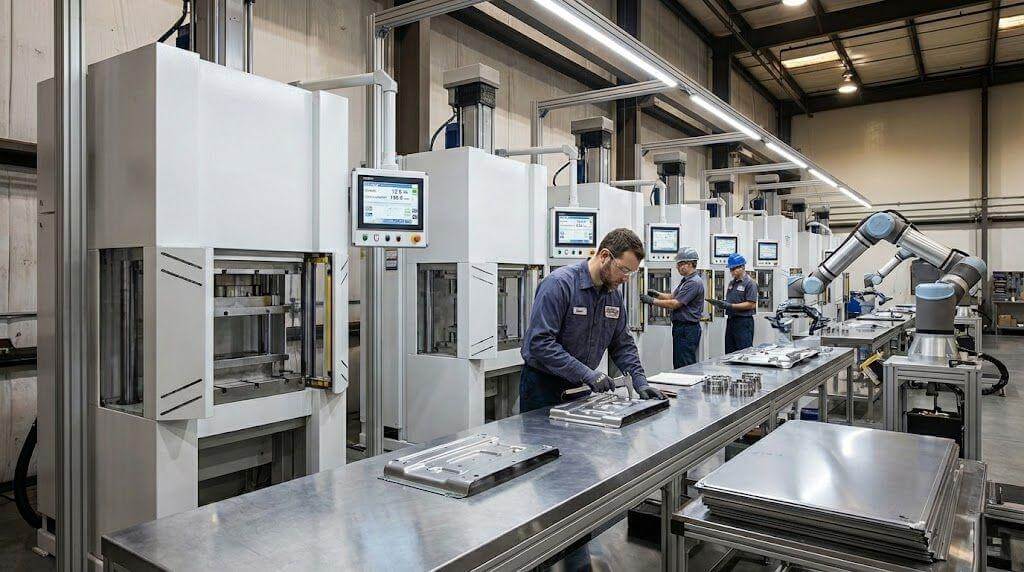Sheet metal welding demands precision and skill. Many fabricators struggle with warping, distortion, and weak joints when working with thin materials. TIG welding offers a solution, but it requires specialized techniques. How can you harness this method to create flawless sheet metal welds?
TIG (Tungsten Inert Gas) welding excels at joining thin sheet metal. It provides superior control, minimal distortion, and clean, strong welds. By using a non-consumable tungsten electrode and inert gas shielding, TIG allows for precise heat input and weld placement.
Let’s explore the techniques, tools, and best practices that will elevate your TIG welding skills for sheet metal work. We’ll cover everything from equipment setup to advanced methods for tackling common challenges.
Introduction to TIG Welding for Sheet Metal
What is TIG Welding?
TIG welding, or Tungsten Inert Gas welding, uses a non-consumable tungsten electrode to produce the weld. An electric arc forms between the electrode and the workpiece, melting the metal. A shielding gas, typically argon, protects the weld area from atmospheric contamination.
Why Choose TIG Welding for Sheet Metal?
TIG welding shines when working with sheet metal. It offers precise control over heat input, which is crucial for thin materials. This method produces clean, high-quality welds with minimal distortion. It’s the go-to choice for projects requiring excellent aesthetics and structural integrity.
Advantages of TIG Welding Over Other Welding Methods
TIG welding outperforms other methods for sheet metal in several ways. It creates stronger, more ductile welds than MIG or stick welding. The process generates less spatter, reducing post-weld cleanup. TIG allows for welding in all positions and excels at joining dissimilar metals.
Overview of Common Sheet Metal Types Used in TIG Welding
Various sheet metals respond well to TIG welding. Stainless steel is a popular choice due to its corrosion resistance and strength. Aluminum, known for its lightweight properties, welds beautifully with TIG. Copper, brass, and titanium also yield excellent results.
The Essential Tools and Equipment for TIG Welding Sheet Metal
TIG welding sheet metal requires a specific set of tools and equipment. Let’s explore the essentials you’ll need to get started.
TIG Welding Machine: Features and Specifications
A quality TIG welder is the cornerstone of your setup. Look for these features:
AC/DC capability allows you to weld both ferrous and non-ferrous metals. Adjustable amperage control is crucial for thin sheet metal. Aim for a machine with a low-end range of 5-10 amps. Pulse welding functionality helps reduce heat input, minimizing distortion.
For most sheet metal work, a 200-amp machine will suffice. A high-frequency start is preferable as it allows arc initiation without touching the metal.
Selecting the Right Tungsten Electrode for Sheet Metal
Tungsten selection impacts weld quality significantly. For sheet metal, consider these options:
2% Thoriated tungsten offers good arc starts and stability. It’s ideal for DC welding on steel and stainless steel. Lanthanated tungsten performs well on both AC and DC, making it versatile for various metals. Created tungsten excels at low amperage, perfect for thin sheet metal.
Choose the smallest diameter electrode that can handle your amperage. For sheet metal, 1/16″ or 3/32″ diameters are common.
Shielding Gas: Options and Best Practices
Proper shielding gas protects your weld from contamination. For most sheet metal applications, pure argon is the go-to choice. It provides excellent arc stability and weld appearance.
Set your flow rate between 15-20 CFH for most sheet metal work. Use a gas lens to improve gas coverage, especially on thin materials. This allows for a longer stick-out, enhancing the visibility of the weld puddle.
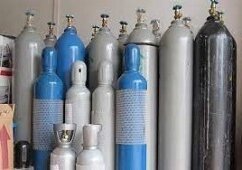
Preparing for a Successful TIG Welding Project
Proper preparation is key to achieving high-quality TIG welds on sheet metal. Let’s dive into the essential steps to set yourself up for success.
Metal Surface Preparation Techniques
Clean metal is crucial for strong, defect-free welds. Follow these steps:
Remove all oil, grease, and dirt using acetone or a degreaser. Avoid chlorinated solvents as they can cause porosity. Use a stainless steel wire brush to remove oxides. Brush in one direction to avoid embedding contaminants.
For stubborn oxides, use a dedicated metal cleaner. Aluminum requires special attention – use a dedicated aluminum cleaner to remove its tough oxide layer.
After cleaning, avoid touching the weld area with bare hands. Skin oils can contaminate the surface.
Choosing the Right Filler Material for TIG Welding
Filler material selection is critical for weld strength and appearance. Match your filler to the base metal:
For mild steel, ER70S-2 or ER70S-6 work well. Stainless steel typically uses ER308L or ER316L. Aluminum welding often employs ER4043 (for most alloys) or ER5356 (for higher strength).
Select a filler rod diameter that matches your base metal thickness. For sheet metal, 1/16″ or 3/32″ diameters are common.
How to Set Up a Clean and Safe Welding Workspace
A well-organized workspace enhances safety and efficiency. Consider these tips:
Clear your welding area of flammable materials. Use a fire-resistant welding blanket to catch sparks. Organize your tools within easy reach to minimize movement while welding.
Ensure your work surface is stable and at a comfortable height. A dedicated welding table with a steel top is ideal for grounding and heat dissipation.
Mastering TIG Welding Techniques for Sheet Metal
TIG welding sheet metal demands precision and skill. Let’s explore the techniques that will elevate your welding game.
Key Principles of TIG Welding Sheet Metal
Success in TIG welding sheet metal hinges on several core principles:
Maintain a short arc length, typically 1/8 inch or less. This focuses on the heat and improves control. Move at a consistent speed to ensure even heat distribution. Too slow causes excess heat buildup, while too fast leads to a lack of fusion.
Add filler metal sparingly. Excessive filler can lead to overflow and poor penetration. Practice coordinating your torch movement, filler rod dips, and foot pedal control.
Understanding Heat Control and Its Impact on Thin Metal
Heat management is crucial when welding thin materials:
Use the lowest amperage possible that still achieves fusion. Start with about 1 amp per thousandth of an inch thickness. Pulse welding alternates between high and low current, reducing overall heat input.
Employ tack welds to secure your workpiece before full welding. This minimizes warping from heat buildup. Use copper or aluminum backing bars to dissipate heat quickly.
Techniques for Maintaining Precision and Accuracy
Precision is key in sheet metal TIG welding:
Use both hands – one for the torch and one for the filler rod. This improves stability and control. Rest your hands or arms on a stable surface to minimize movement.
For long welds, try the ‘walking the cup’ technique. This involves rolling the ceramic cup along the joint while welding. It helps maintain a consistent arc length and travel speed.
Managing Weld Bead Appearance and Quality
A good-looking weld is often a strong weld:
Maintain a consistent travel speed and arc length for an even bead appearance. Add filler metal rhythmically, matching your puddle movement.
For a flat bead profile, keep your filler rod angle low, around 15-20 degrees. Adjust your torch angle slightly forward (5-15 degrees) in the direction of travel.
Clean your tungsten electrode regularly. A contaminated electrode leads to erratic arc behavior and poor bead appearance.
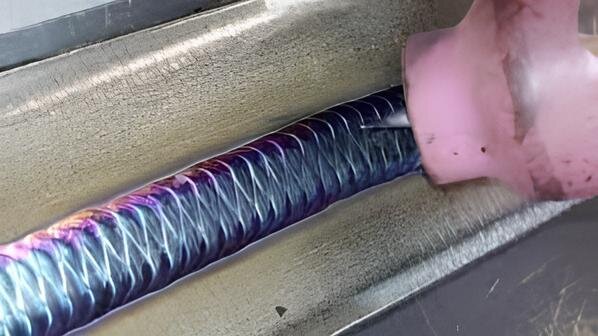
Avoiding Common TIG Welding Issues
Even experienced welders face challenges with sheet metal. Let’s address common issues and their solutions.
How to Prevent Warping in Sheet Metal
Warping is a frequent problem when welding thin materials:
Use intermittent welding techniques. Weld in short bursts, allowing the metal to cool between welds. This distributes heat more evenly. Employ copper or aluminum backing bars. These absorb excess heat and help maintain flatness.
Secure your workpiece firmly before welding. Use clamps or tack welds to prevent movement. Consider the ‘step-back’ method. Weld in short sections, moving backward along the joint.
Managing Overheating: Causes and Solutions
Overheating can lead to burn-through and weakened welds:
Reduce your amperage. Start low and increase gradually until you achieve proper fusion. Use a pulsed welding current. This alternates between high and low amperage, reducing overall heat input.
Increase your travel speed. Moving faster prevents heat buildup in one area. Take breaks between welds. Allow the metal to cool naturally or use compressed air for faster cooling.
Troubleshooting Incomplete Penetration and Porosity
These issues compromise weld strength and appearance:
For incomplete penetration, ensure proper joint preparation. Clean edges and correct fit-up are crucial. Adjust your welding angle. Aim for 15-20 degrees from vertical for better penetration.
To prevent porosity, thoroughly clean your base metal and filler rod. Remove all oils, dirt, and oxides. Check your shielding gas flow. Inadequate coverage can lead to atmospheric contamination.
Avoiding Cracks and Distortion in Thin Metal Sheets
Cracks and distortion can ruin your project:
Preheat your metal slightly for more uniform heating. This reduces stress from rapid temperature changes. Use a three-pass technique: tack weld, root pass, then cover pass. This method helps control heat input.
Avoid starting and stopping in the same spot. Crater cracks often form at the end of welds. Instead, use run-off tabs or weld past the joint end.
Practice proper filler rod technique. Add filler consistently and in appropriate amounts. Too much or too little can lead to stress and cracking.
TIG Welding Aluminum vs. Steel Sheet Metal
TIG welding aluminum and steel sheet metal require different approaches. Let’s explore the key differences and techniques for each material.
Differences in TIG Welding Techniques for Aluminum and Steel
Aluminum and steel behave differently under the welding arc:
Aluminum conducts heat rapidly, while steel retains heat. This affects your welding speed and heat input. Use AC for aluminum to break down its oxide layer. Steel typically uses DC electrode negative.
Aluminum requires a larger diameter tungsten electrode than steel at the same amperage. This helps prevent tungsten contamination in the weld pool.
Choosing the Right Filler Rod for Aluminum and Steel
Filler rod selection is crucial for both materials:
For aluminum, common choices include:
- ER4043 for general-purpose welding
- ER5356 for higher-strength applications
Steel filler rods depend on the base metal:
- ER70S-2 or ER70S-6 for mild steel
- ER308L or ER316L for stainless steel
Match your filler rod diameter to your base metal thickness. Smaller diameters work better for thin sheet metal.
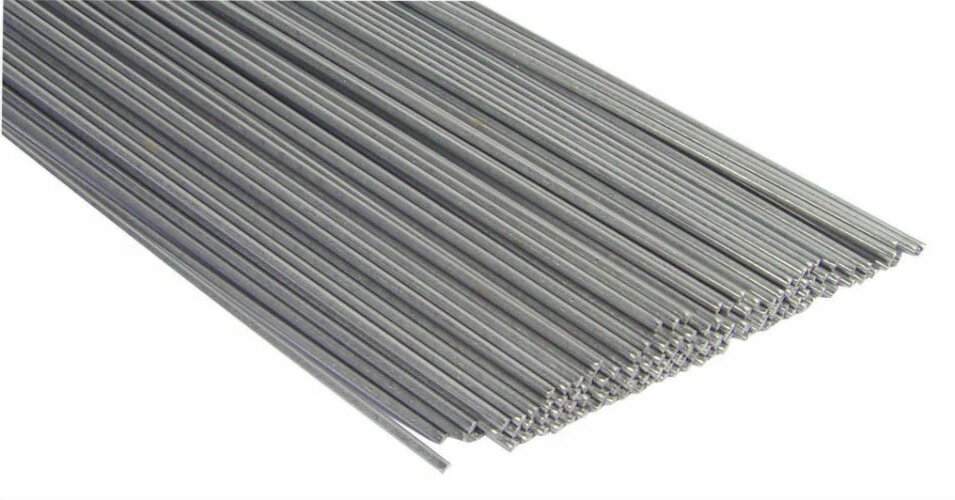
TIG Welding Thin vs. Thick Sheet Metal
TIG welding different thicknesses of sheet metal requires adjusting your technique and settings. Let’s explore how to handle both thin and thick materials effectively.
Best Practices for Welding Thin Metal Sheets
Welding thin metal requires a delicate touch:
Use the lowest possible amperage that still achieves fusion. Start around 1 amp per 0.001 inch of thickness. Employ pulse welding to reduce overall heat input. This helps prevent burn-through.
Move quickly to avoid heat buildup. A faster travel speed prevents warping. Use a smaller diameter tungsten electrode, typically 1/16 inch or smaller. This allows for better control at low amperages.
Welding Thick Sheet Metal: Adjusting Settings and Technique
Thicker metal demands different approaches:
Increase your amperage to ensure full penetration. Use a rule of thumb of 1 amp per 0.001 inch, but adjust as needed. Slow down your travel speed. This allows more time for heat to penetrate the material.
Consider using a larger diameter tungsten electrode. This helps handle higher amperages without contamination.
Conclusion
TIG welding sheet metal demands skill but yields superior results. Focus on clean preparation, precise heat control, and steady technique. With practice, you’ll create strong, attractive welds on even the thinnest materials.
Do you need a reliable sheet metal parts manufacturer? Shengen is the place to go. We specialize in sheet metal laser cutting, stamping, surface finish, and CNC Machining. Reach out to Shengen Today and seek help from professionals!
FAQs
What’s the Best Shielding Gas for TIG Welding Sheet Metal?
Pure argon is best for most sheet metal TIG welding. It offers good arc stability and control. For thick aluminum, a helium-argon mix can help. Stick to pure argon for stainless steel and other metals.
Can TIG Welding Be Used on All Types of Sheet Metal?
TIG works well on most sheet metals, especially stainless steel, aluminum, and copper alloys. It’s less ideal for galvanized steel. Cast iron is challenging. For most common fabrication metals, TIG is excellent.
What Is the Difference Between TIG and MIG Welding for Sheet Metal?
TIG offers more precision and cleaner welds than MIG for sheet metal. It causes less distortion, ideal for thin materials. TIG works in all positions and is best for visible welds. MIG is faster but less precise. Choose TIG for top quality and appearance.
What is tungsten for TIG welding sheet metal?
Use 2% thoriated or 2% created tungsten for most sheet metal. For aluminum, try pure or zirconiated tungsten. Use small diameters (1/16″ or 3/32″) for thin materials. Match tungsten type and size to your specific job and amperage.
Hey, I'm Kevin Lee

For the past 10 years, I’ve been immersed in various forms of sheet metal fabrication, sharing cool insights here from my experiences across diverse workshops.
Get in touch

Kevin Lee
I have over ten years of professional experience in sheet metal fabrication, specializing in laser cutting, bending, welding, and surface treatment techniques. As the Technical Director at Shengen, I am committed to solving complex manufacturing challenges and driving innovation and quality in each project.


